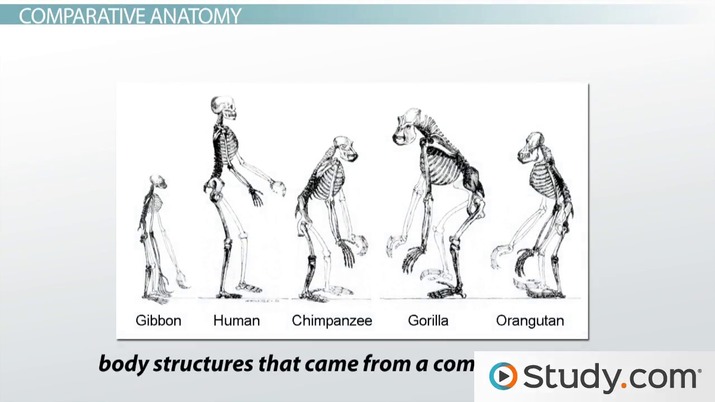As we all know there is an ideology that the world that we see today is also in a process of evolution and development. Evolution - Evolution - Biogeography.
 Scientific Evidence That Supports Evolution Video Lesson Transcript Study Com
Scientific Evidence That Supports Evolution Video Lesson Transcript Study Com
The fossil record that shows that the simpler fossils are generally found deeper in the earth supports Darwins concept that life has progressed from the simple to the complex.
How does the biogeography of fossils support evolutionary theory. Broadly the theory of evolution is supported by biogeography through evidence such as the species on Earth being distributed around the planet based on their genetic relationships to each other. The idea goes once upon 200 million years ago a supercontinent called Pangea began breaking into several continents. As such it provides invaluable evidence for common descent.
Biogeography not only provides significant inferential evidence for evolution and common descent but it also provides what creationists like to deny is possible in evolution. It states that the species of a particular region share a common lineage ancestry. Biogeography is split into two areas.
Biogeography supports the theory of evolution and describes the distribution of lifeforms over various geographical areas both in the past and the present times. Nearly one-third of them live in Hawaii and nowhere else although the total area of the archipelago is less than. Of the small proportion of organisms preserved as fossils only a tiny fraction have been recovered and studied by paleontologists.
Basically if evolution is real youd expect groups of organisms that are related to one another to be clustered near one another because related organisms come from the same common ancestor. The field of paleobiogeography uses the fossil record over billions of years along with geographic evidence to support evolutionary theory. Biogeography does not support the theory of evolution any more.
When you hear talk of evidence for evolution the first thing that frequently comes to mind for most people is fossils. There are however many places on earth where the complex thought to be younger fossils are found beneath simpler fossils thought to be older Darwins theory postulates that slow gradual changes or slight improvements due to natural selection is sufficient to account for the changes evolution or organisms. The fossil record is incomplete.
So the distribution of species we see today supposedly reflects their evolutionary histories. Gaps or missing links are usually filled in once fossil records are found that satisfy the hypotheses. The fossil record has one important unique characteristic.
Fossil records also then help in creating ancestralevolutionary trees. Evolutionary theory states that over long periods of time biological populations experience changes in. The field of paleobiogeography uses the fossil record over billions of years along with geographic evidence to support evolutionary theory.
By showing that organisms found in a particular area tend to be more closely related to each other than they are to organisms in other areas gene flow speciation. In order to support his theory Charles Darwin used biogeography fossils and the evolution of the world as a whole. Textbooks raise various biogeography arguments as supposed evidence for evolution with specific examples addressed in other articles.
3 As those continents drifted apart they carried the ancestors of modern organisms with them. Biogeography aims to reveal where organisms live at what abundance and why they are or are no found in a certain geographical area. Broadly the theory of evolution is supported by biogeography through evidence such as the species on Earth being distributed around the planet based on their genetic relationships to each other.
Ecological biogeography which is concerned with current distribution patterns and historical biogeography which is concerned with long-term and large-scale distributions. The field of paleobiogeography uses the fossil record over billions of years along with geographic evidence to support evolutionary theory. Darwin also saw a confirmation of evolution in the geographic distribution of plants and animals and later knowledge has reinforced his observations.
It is our only actual glimpse into the past where common descent is proposed to have taken place. Fossils of the simplest organisms are found in the oldest rocks and fossils of more complex organisms in the newest rocks. Biogeography the study of living things around the globe helps solidify Darwins theory of biological evolution.
This is the study of prehistoric life including fossils footprints and past climatic events. How does biogeography support evolutionary theory. 4 For now lets think through how to process.
The history of life recorded by fossils presents compelling evidence of evolution. The field of paleontology is important to the support and understanding of evolution. Broadly the theory of evolution is supported by biogeography through evidence such as the species on Earth being distributed around the planet based on their genetic relationships to each other.
How does the biogeography of fossils support evolutionary theory. For example there are about 1500 known species of Drosophila vinegar flies in the world. In some cases the succession of forms over time has been reconstructed in detail.
This supports Darwins theory of evolution which states that simple life. According to the German geophysicist Alfred Wagners theory of Continental drift the so-called evolution theory is possible.